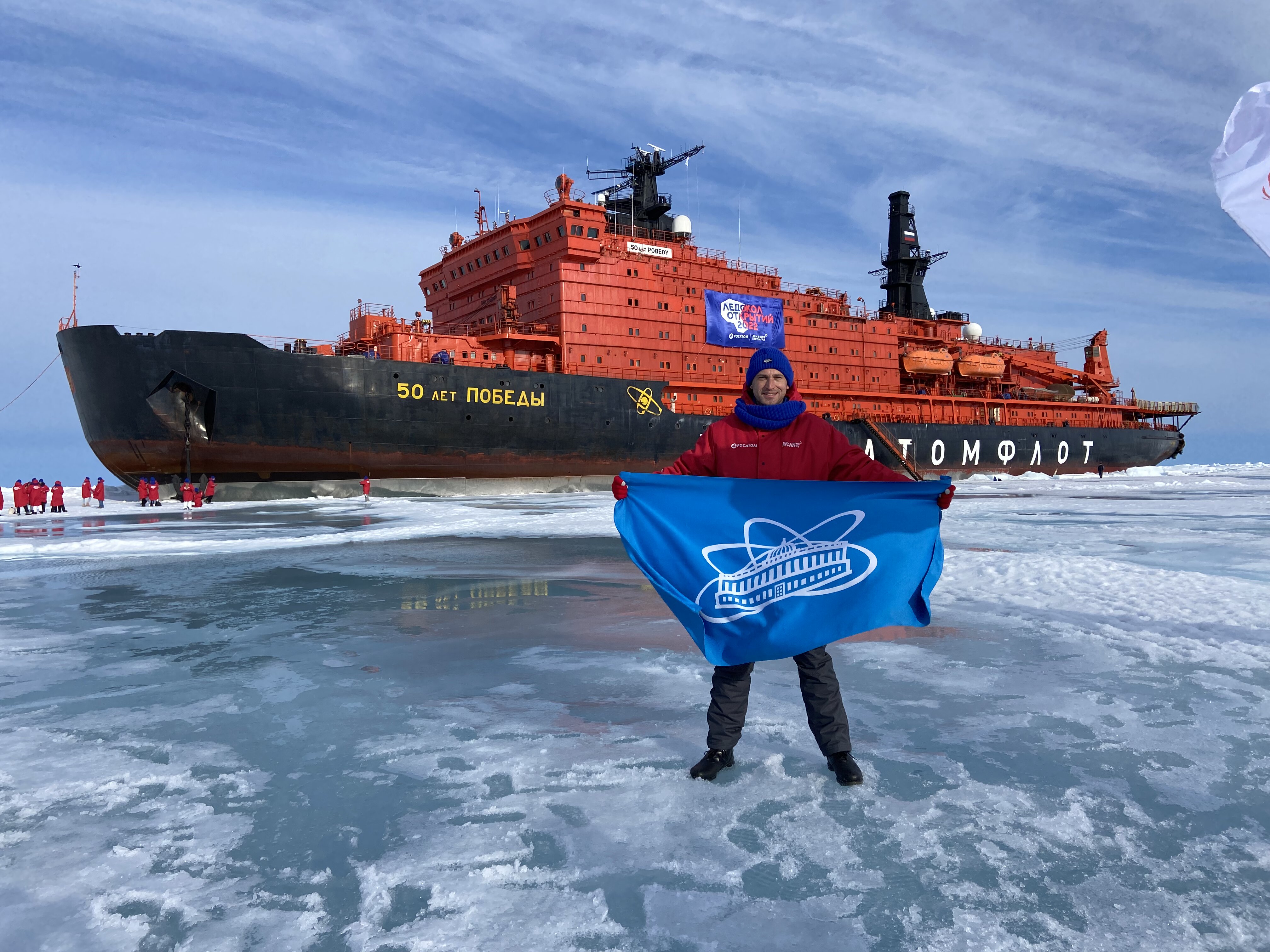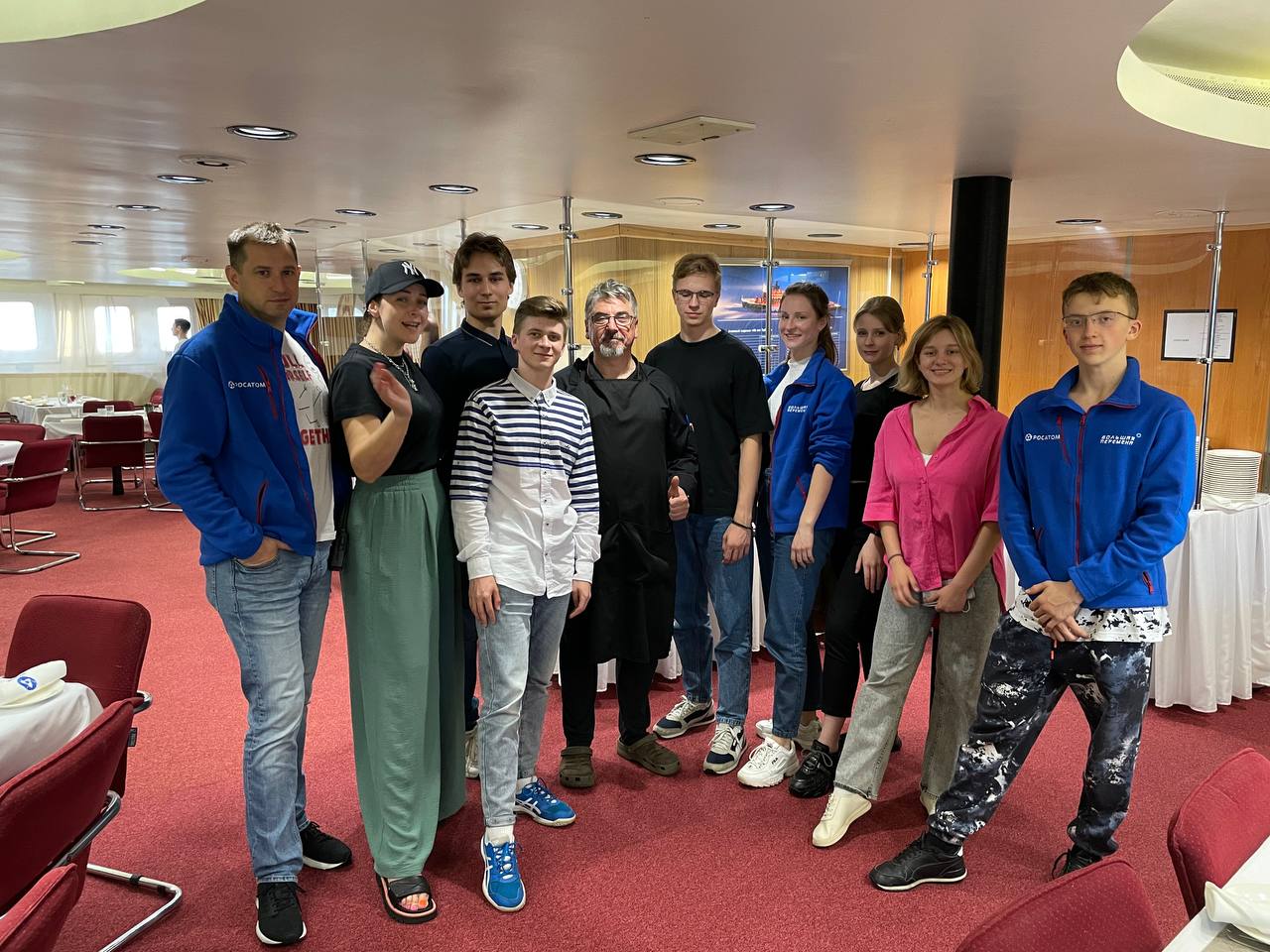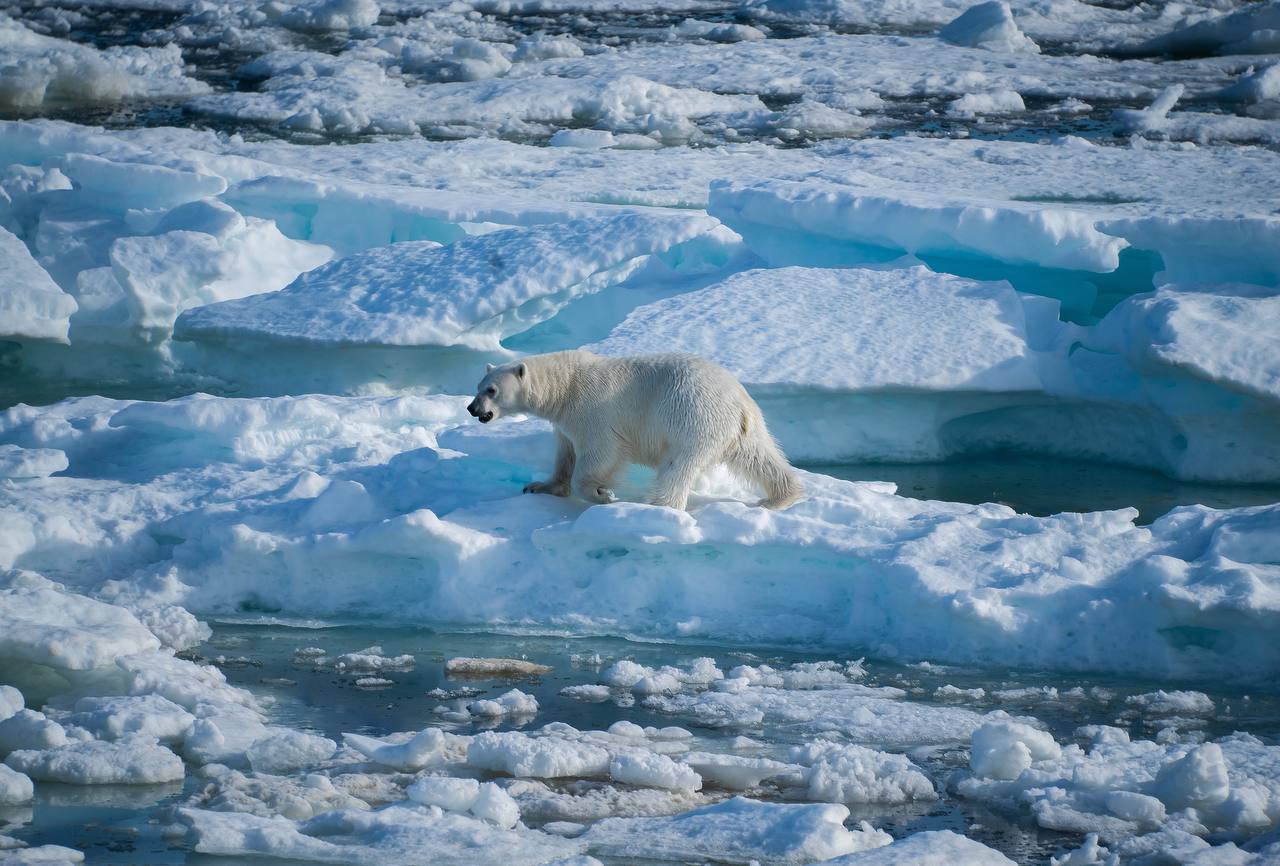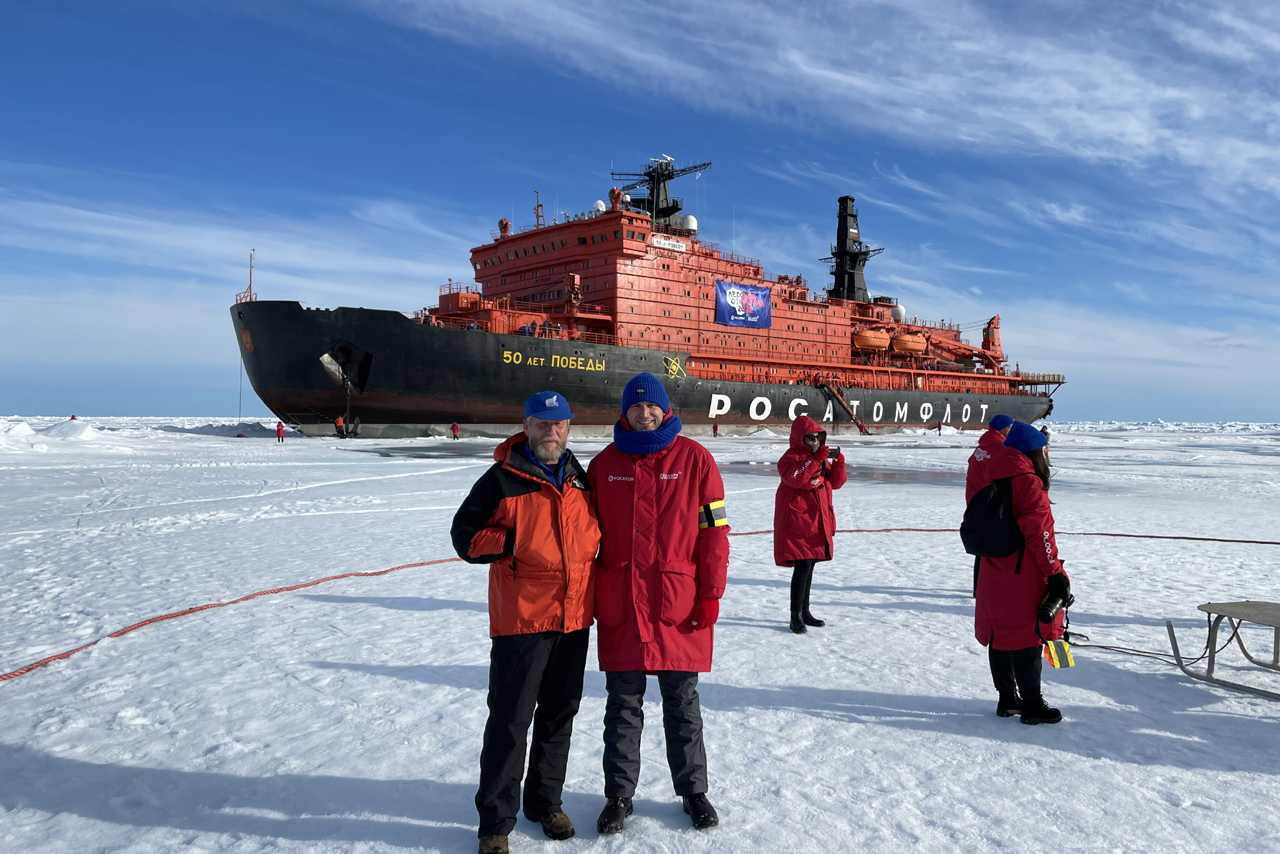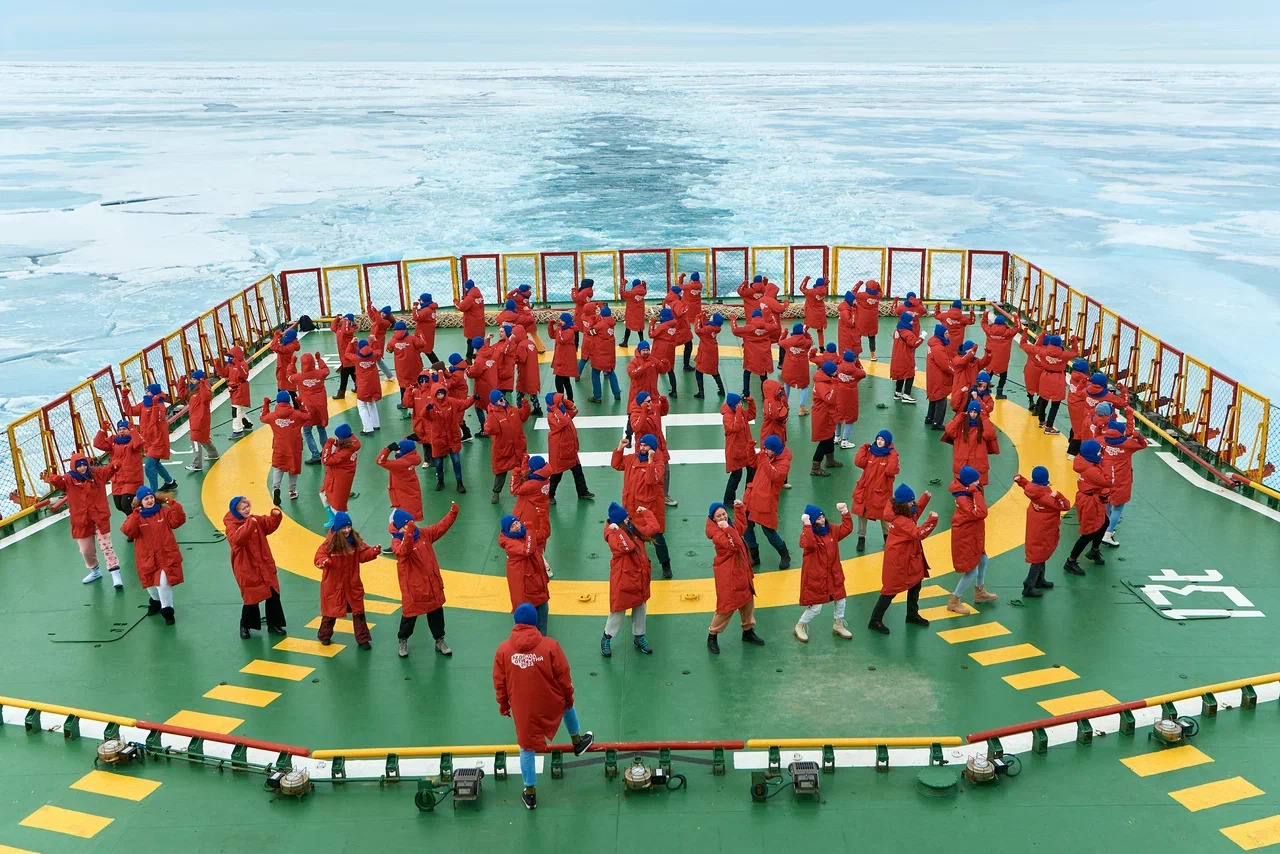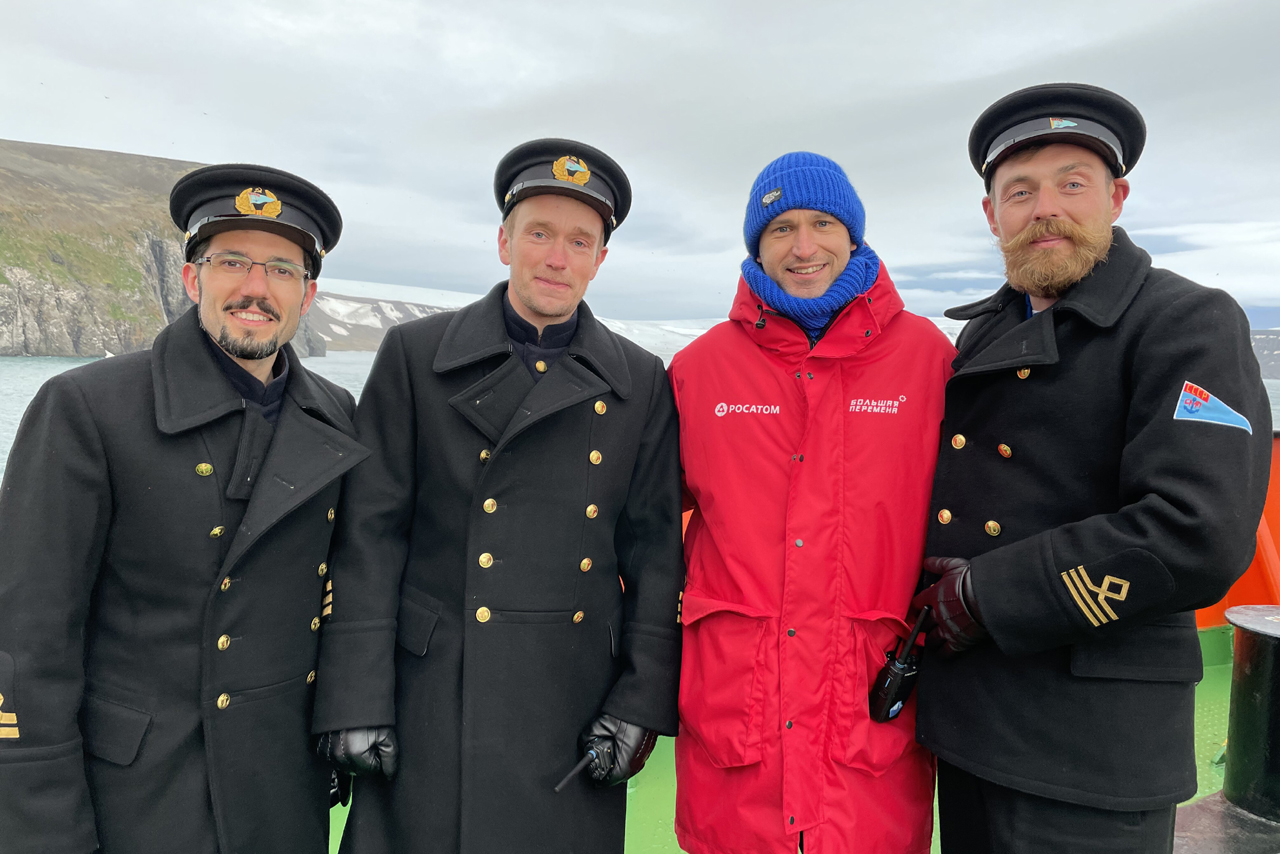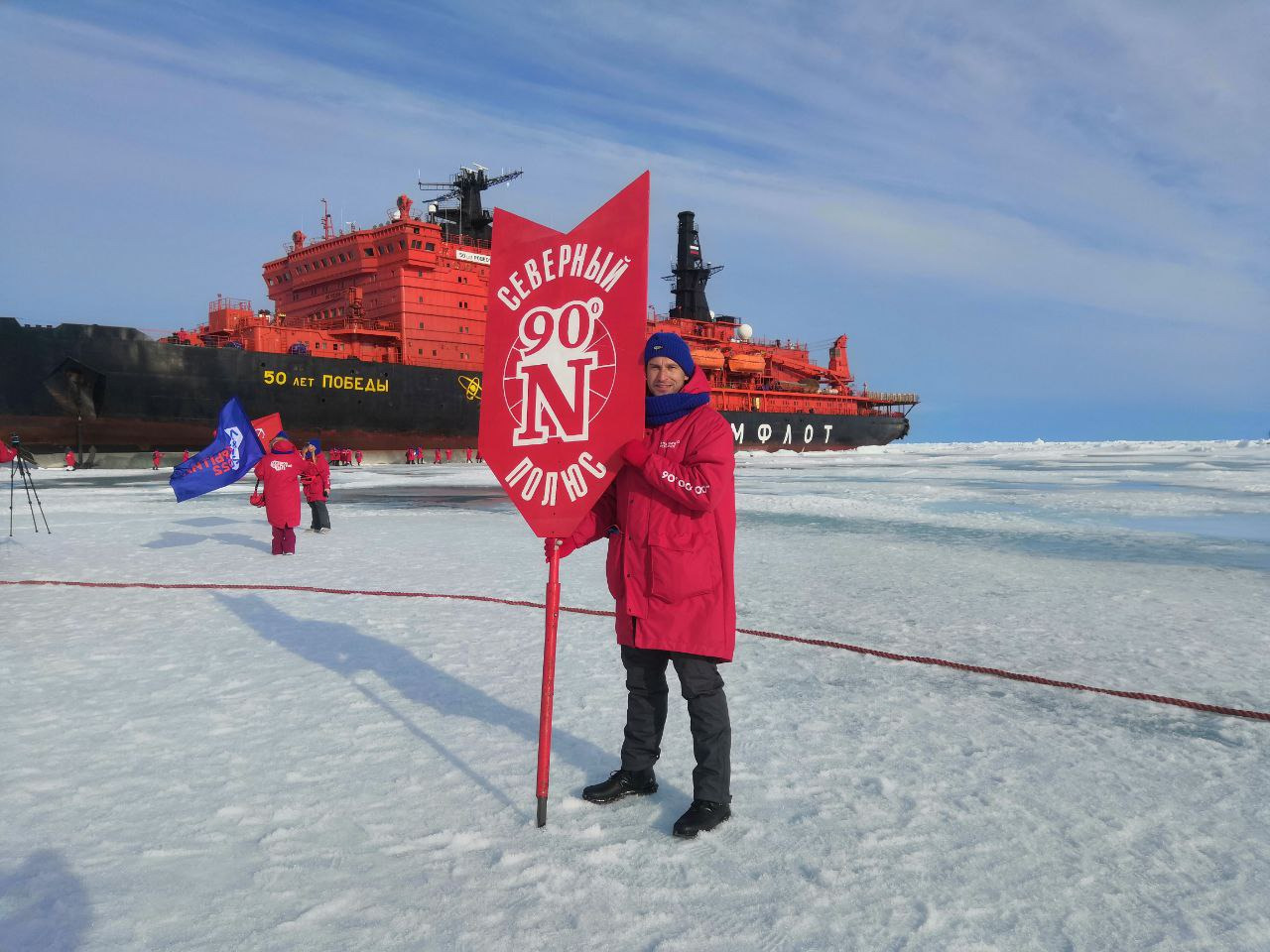Children, Arctic, Science: about “Icebreaker of Discoveries” with participation of JINR scientist
Interview, 02 August 2022
The icebreaker “50 years of Victory” of Rosatomflot completed the expedition to the North Pole, which took place from 17 to 28 July. 70 participants – talented schoolchildren from all over Russia — and lecturers of the large-scale educational project “Icebreaker of Discoveries 2022” of the Rosatom State Corporation returned to the mainland. New knowledge, impressions, meetings, discoveries: one of the lecturers of the project, a scientist of the Joint Institute Mark Shirchenko commented on the expedition to the Arctic.
– Mark, welcome back from the cold land! Please, tell us about the project and how you became its participant.
-“Icebreaker of Discoveries” is an educational project of Rosatom for school students. The expedition was the main prize in the Big Break project. I was invited to the fourth expedition of the “Icebreaker of Discoveries” by ANO Atomic Energy Information Centre with which I had been cooperating for about a year. I read lectures in its several centres and took part in the HomoScience festival in Nizhny Novgorod.
– What was the educational programme like on the icebreaker?
– Organizers divided it into three tracks: “Discovering Ourselves”, “Discovering the Arctic”, and “Discovering Technologies”. The “Discovering Ourselves” track was conducted by the ANO Rosatom Corporate Academy. Lecturers told participants about personal development, communication secrets, and how to create your own startup. The track “Discovering Arctic” was held by representatives of the Russian Arctic National Park and the Arctic and Antarctic Research Institute. Within the track, participants learned the history of Arctic and its exploration. I took part in the track “Discovering Technologies”. Children were introduced to reactors and icebreakers design, additive technologies, and much more.
– You provided a talk show “Physics by Sheldon Cooper” dedicated to your participation in the translation of the TV series “The Big Bang Theory”. Why did you choose this format?
– I even provided two such events and called them talk shows thus making it clear that I was waiting for live discussions.
– Did participants get involved in this work?
– Even more than expected! We watched some extracts from the series, and I explained the physical phenomena mentioned by the characters of the sitcom in the most easy and clear way. Children were active and open-minded. If they didn’t understand anything, they asked questions, which gradually turned into a lively discussion. Despite the fact that the bulk of the participants were mainly keen on humanities, questions about physical aspects were really intelligent. It was pleasant and interesting to answer them.
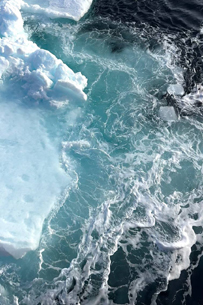 – What was the most tricky question?
– What was the most tricky question?
– Perhaps, it was about my main dream in neutrino physics. And for me, it is a compact neutrino detector. The neutrino theme excited children. I told them about the particle itself, the Baikal-GVD project, the Kalinin Nuclear Power Plant, our project DANSS. You know, one of the participants told me after the talk show that he was going to study economics in the future and now understood why it is necessary to earn money. “It allows people like you conduct their research”. And this is fascinating to know that our offspring see the world this way!
– It seems like lectures really inspired children! How did participants like the educational programme in general?
– They had a genuine interest. However, I must say that not only children admired lectures. For example, the programme allocated an hour and a half dedicated to the lecture on ice. At first, you think that it is impossible to discuss this topic so long, but one could not even get distracted from it because people spoke about objects of their scientific interest very enthusiastically. I had a chance to talk to the lecturer after her performance. We were standing on the bridge, and she was detecting the age of the ice by just one gaze, “This one is not interesting, it is only one-year old. Unlike that one, which is two-year old, there must be something to study in it.”
– Please, tell us about the disembarkation at the North Pole. Were there any safety rules?
– Yes, there were, and quite strict ones. The captain and the crew assessed the state of the ice since the expedition took place in summer. So ice was not strong enough everywhere. The territory for the disembarkation was also checked for the presence of wild animals, in particular, a polar bear, the owner of the Arctic.
– Have you seen it?
– Yes! It was incredible!
– What were the days like on the icebreaker?
– Participants woke up and were told about the situation overboard. It was reported on by Victor Boyarsky, a hero of the Guinness Book of Records, an honorary polar explorer who had traveled all over Antarctica on a dog sled. After that, participants of the expedition did some morning exercises on the icebreaker’s helipad under the careful guidance of the Olympic champion in synchronised swimming Alla Shishkina. Morning rituals ended with a breakfast cooked by a chef from St. Petersburg. And then there were lectures, workshops, communication, creativity. Schoolchildren were diverse and amazingly creative! One of the participants even composed a song during the expedition.
– What was the after-lecture communication like?
– The concentration of interesting people was enormous, but children were shy to come up to lecturers at first. Organizers helped to break the ice between us. As a result, at the end of the expedition we were so close that did not want to part. I think that I acquired much more from participants than I managed to give them back. People have become the main impression of the project.
– Would you like to repeat such a trip?
– Yes! I am ready to go right now!
The “Icebreaker of Discoveries 2022” expedition is a joint project of the Rosatom State Corporation and the Big Break all-Russian competition. School students passed a strict selection, carried out creative tasks. Only 70 participations out of 4 million school children won tickets to the North Pole. The expedition was carried out on the atomic icebreaker “50 years of Victory” of Rosatomflot, one of the world-largest icebreakers. The route of the expedition was Murmansk – the North Pole – Franz Josef Land – Murmansk.
